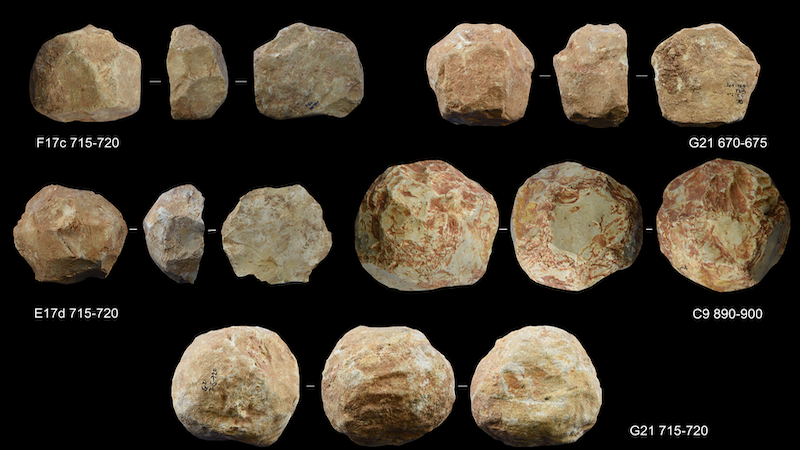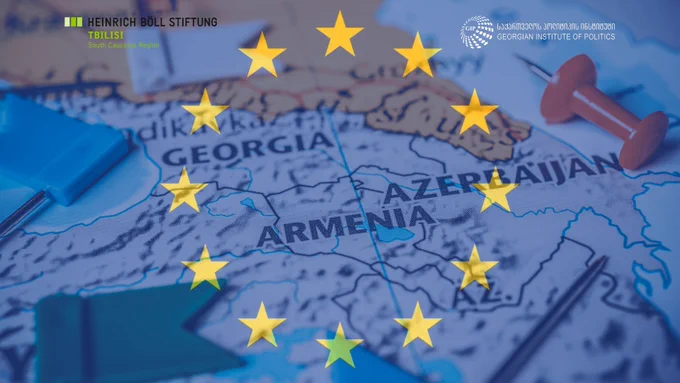

By Bogoljub J. Karić
My journey of business peacemaking began in 1973. At that time, we had a private company despite never being members of the Communist Party. During that era, lacking party endorsement meant nearly all the doors were closed, and business opportunities were exclusively granted to companies whose leaders held party membership. Consequently, our generations-old clergy family found itself destined for failure, left with no option but to survive and prosper.
My father served as a peacemaker, reconciler, a mediator among feuding families in Kosovo – a role that extends through my grandfather and ancestors. As a family of priests, we were always there for all neighbors and fellow citizens grappling with problems, such as, for example, blood feuds. In such situations, both Serbs and Albanians would always reach out to us. My ancestors consistently played a role in mediation and reconciliation, passing down this gift to me. Thus, by respecting and cherishing my family and continuing its traditions, I am committed to actively fostering reconciliation among Serbian families in Kosovo, Albanian families in Kosovo, and, most challenging of all, reconciliation between Serbian and Albanian families. I believe that the ability for successful mediation is a gift from God, inherited from my family.
Starting business operations in the communist era
At that time, the President of SFR Yugoslavia, Josip Broz Tito, visited Peć/Peja. The Mayor of Peć presented Tito with the album “Peć in the 19th Century, and Peć Today”, the work by my brother Zoran. Tito was impressed by the efforts of our company, introduced to him as the first family-owned enterprise by the Mayor of Peć. He acknowledged that our company and family business posed no threat to the constitutional order of Yugoslavia at the time and expressed support for our company’s development. This transpired almost fifty years ago. After the encouragement and support we received from President Tito, we established three factories, and the workforce steadily increased. These were production plants that included producing equipment for mini-bakeries, a plant for specialized equipment based on Italian technology, equipment for meat processing, attachments and spare parts for tractors and other agricultural machinery, as well as the production of non-standard screw products, etc. That is how we became the first private and family-owned company, not just in Yugoslavia but also in the entire communist world. Our private business primarily consisted of factory production, and we quickly became a global phenomenon. At that time, leading world publications, from the Chinese Zhenmin Zhibao to the New York Times, wrote about us. The Washington Post also began covering the development of private entrepreneurship and business in Yugoslavia, wondering if this represented successful and happy capitalism. During that time, we received tremendous support from the U.S. Embassy in Yugoslavia. The support for these, and all our other products, was exceptional.
Mikhail Gorbachev assumed the presidency of the Soviet Union and during his first visit to Yugoslavia, our government promptly proposed showcasing our company and introducing him with our operations. After gaining insight into our company’s activities, President Gorbachev instructed Nikolai Ryzhkov, the Prime Minister of the Soviet Union, to request that we provide an overview of our business activities in Peć and throughout Kosovo and Metohija.
Three months later, we received an invitation from the Kremlin to visit Moscow. There, Prime Minister Ryzhkov extended immense support on behalf of President Gorbachev, providing us with everything necessary to replicate in Russia what we had been creating in Yugoslavia. Therefore, with complete conviction, I can state that ‘Perestroika’ in Russia started thanks to us. We were the first to establish private companies in communist Russia as well.
The development of our companies in capitalism and initiatives for peace and cooperation
Our business operations have continued to dynamically and successfully evolve, experiencing a true flourishing within a market-liberal system. The successful growth of our companies has led to a substantial increase in employment and technological innovation.
We have consistently been leaders and pioneers in the development of new industries. We established the first Internet company, the first private bank, the first private television, the first private insurance company and the first private university.
During the 1990s, when Milošević came to power, assisted by Mahmut Bakali, a high-ranking official in Yugoslavia at the time, I initiated a potential for agreement with Ibrahim Rugova, who made every effort to achieve a peaceful resolution in Kosovo. However, during that time, we fell victim to misunderstandings within our own ranks. Had our side permitted for the implementation of my ‘Karić Model for Shared Prosperity’ to foster reconciliation and successful development, peace would certainly have been be ensured, along with the successful economic, social, and cultural development of Kosovo. I proposed state participation in the implementation of my Model by privatizing 51% of the capital of all companies in Kosovo, selling them to foreign companies from technologically advanced countries, and distributing 49% of the capital’s value to the workers. Had my Model been implemented, there would have been no war, and Kosovo would be a highly developed region today. I authored a 73-page study at that time, which Mahmut Bakali endorsed, deeming it beneficial for my Model to be implemented step by step. Regarding education, I proposed conducting it in the native language for each ethnic group, including familiarity with the literature in mother tongue as well as the cultural values of one’s people.
In the year 2000, I extended an invitation to Adem Demaçi to visit Serbia with an economic delegation and to appear on BK Television. We agreed to immediately initiate economic rapprochement between the economies of Serbia and Kosovo. The first joined meetings of business community were held in Kosovo followed by Albania, Croatia and Bosnia and Herzegovina, garnering state support in all these locations except Serbia. The authorities at the time failed to endorse us, as they misunderstood the ‘Karić Model for Shared Prosperity’. When we gathered a hundred businessmen in Brezovica and Pristina, attempting to consolidate economic cooperation and joint endeavors between Serbs and Albanians in Kosovo and other regions, I was denounced as a traitor to Serbia. My family and I faced persecution orchestrated by the centers of power and interest groups associated with (Vojislav) Koštunica. There were even two assassination attempts against me. This was due to my humanitarian efforts, humanistic and common-sense belief that Serbs and Albanians should coexist, collaborate, and progress jointly, while rejecting illicit amuggling and the vested interests of certain circles. Business leaders build bridges and destroy borders, while some politicians build walls and destroy bridges!
“Karić Model for Shared Prosperity”
My economic-development model (Karić Model for Shared Prosperity), which I proposed to the leadership of Serbia at the time, held relevance and significance not only for our entire region, but also for the global community due to its universal character. It remains imperative, both then and now, to secure the necessary investment funds and establish joint companies, with a primary focus on involving companies from Serbia and Albania. Collaborative efforts between Albanians and Serbs would not only enhance the employment rate in Kosovo and beyond, but also establish new forms of business cooperation, ultimately eliminating current tensions and unrest. The problem was that the politicians in power at that time were unwilling to permit it. The criminal centers of power and interest groups under Koštunica favored an unstable situation over peace, allowing them to exploit the northern part of Kosovo for their illicit activities.
In 2004, I was the only candidate for the President of Serbia who visited Kosovo, and my rallies were attended by both Albanians and Serbs. I stated that we should abolish all borders and live and work together. We cannot live apart. It was my belief that in collaboration with our Euro-Atlantic allies, we should strive for peace, prosperity, and economic development for all inhabitants of these troubled regions. However, the response to my efforts was that Koštunica closed down all our companies and rigged the presidential election.
Today, for example, Serbs living in Kosovo find themselves in the most difficult position, because without cooperation with Albanians, the products they create cannot be sold to anyone, and economic activity and cooperation are of utmost importance. If we were to secure the necessary funds today, we could implement my Model enabling Serbs and Albanians to establish joint companies and to work together. Large-scale companies from Serbia and Albania could participate in this initiative, fostering economic activity, growth, employment, and overall well-being for the people of Kosovo. I guarantee that with such initiatives, there would be no war, and peace and social harmony would be achieved. I am a man from Kosovo, I know the mentality. Serbs and Albanians in Kosovo live off the same land, drink the same water, and have the same mentality. Tolerance is even more necessary now than in the nineties, and Serbs currently residing in Kosovo cannot do without Albanians.
Even today, my Model has no alternative. Both Serbs and Albanians see Serbian companies as partners they want to cooperate with, exporting their products and importing necessary goods. After any war or conflict, one must sit down at the negotiating table, because only through dialogue, negotiations, and aligning the interests of negotiating parties can solutions be found, primarily in the interest of the people. The dominant characteristic of this model is the creation of an economic foundation for the establishment of long-term economic cooperation between the parties that were in conflict. The main goal of this cooperation, based on consistent application of the principle of coexistence, should be to create conditions for a better life of citizens. This involves eliminating the key causes of conflicts and investing maximum energy in creating a new common future for citizens. The implementation of the Karić Model for Shared Prosperity implies primarily the creation of joint companies (Serbian and Albanian), ensuring economic growth and all the benefits that come with it, including the desire for peace. So far, no government has been willing to appoint me as a negotiator with Kosovo authorities, despite my personal 33-year-long intense commitment to seeking an efficient and effective solution to resolve the conflict in Kosovo. Once again, I emphasize, the Karić Model for Shared Prosperity entails 100% implementation of joint production, joint work, joint economy and harmonious coexistence of Serbs and Albanians in Kosovo. This Model is also applicable to the situation in Bosnia and Herzegovina, the entire region, and even in Ukraine. I see this model as a paradigm of the consortium that will engage in reconstruction, building and ensuring economic growth in Ukraine after the war.
Final considerations and call to action
I extend a call and earnest plea to individuals wielding influence over economic and political processes to recognize the importance of implementing this Model for achieving peace and economic development, particularly in our region. Therefore, I direct this appeal to esteemed organizations and potential sponsors/donors, and especially to Their Excellencies ambassadors, scientists, professors, and businessmen of authority. I stand ready and at your disposal to actively participate in all reconciliation efforts and contribute to the establishment of better economic cooperation throughout the Western Balkans. Together, we can work for the benefit of all peoples in this region and beyond.
This proposition is underscored by my century-long business experience. I say it is a hundred years long, because I have been working double shifts for over 50 years, dedicating the last decade exclusively to peacemaking and humanitarian activities, to help my country, our region and all those around the world who are struggling to break free from the shackles of backwardness and underdevelopment, and to experience a “catapult” into sustainable growth and development.
My most genuine aspiration is to witness the implementation of the ‘Karić Model for Shared Prosperity’ first in Kosovo, restoring peace to its residents of all nationalities, creating economic, legal and organizational conditions for work and economic activities, establishing necessary order, and thereby creating the prerequisites for a shared life and creation!
About author: Bogoljub J. Karić was born in 1954 in Peć. He graduated from the Faculty of Natural Sciences and Mathematics at the University of Priština, majoring in geography. He earned his master’s degree in “Organization and Development of Small Business” from the Faculty of Economics in Niš. In 1971, alongside his three brothers and sister, he established the family-owned factory “Braća Karić” in Peć. Over nearly five decades, he developed a large-scale company with operations spanning various sectors globally, including telecommunications, construction, finance, education, media, trade, etc.
The views expressed in this article are the author’s own and do not necessarily reflect IFIMES official position.
[1] IFIMES – International Institute for Middle East and Balkan Studies, based in Ljubljana, Slovenia, has a special consultative status with the United Nations Economic and Social Council ECOSOC/UN in New York since 2018, and it is the publisher of the international scientific journal “European Perspectives.”
[2] The article is based on a presentation delivered at the 23rd Belgrade Business Forum held on 28 November 2023, in Belgrade.


